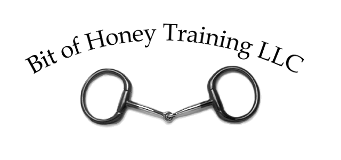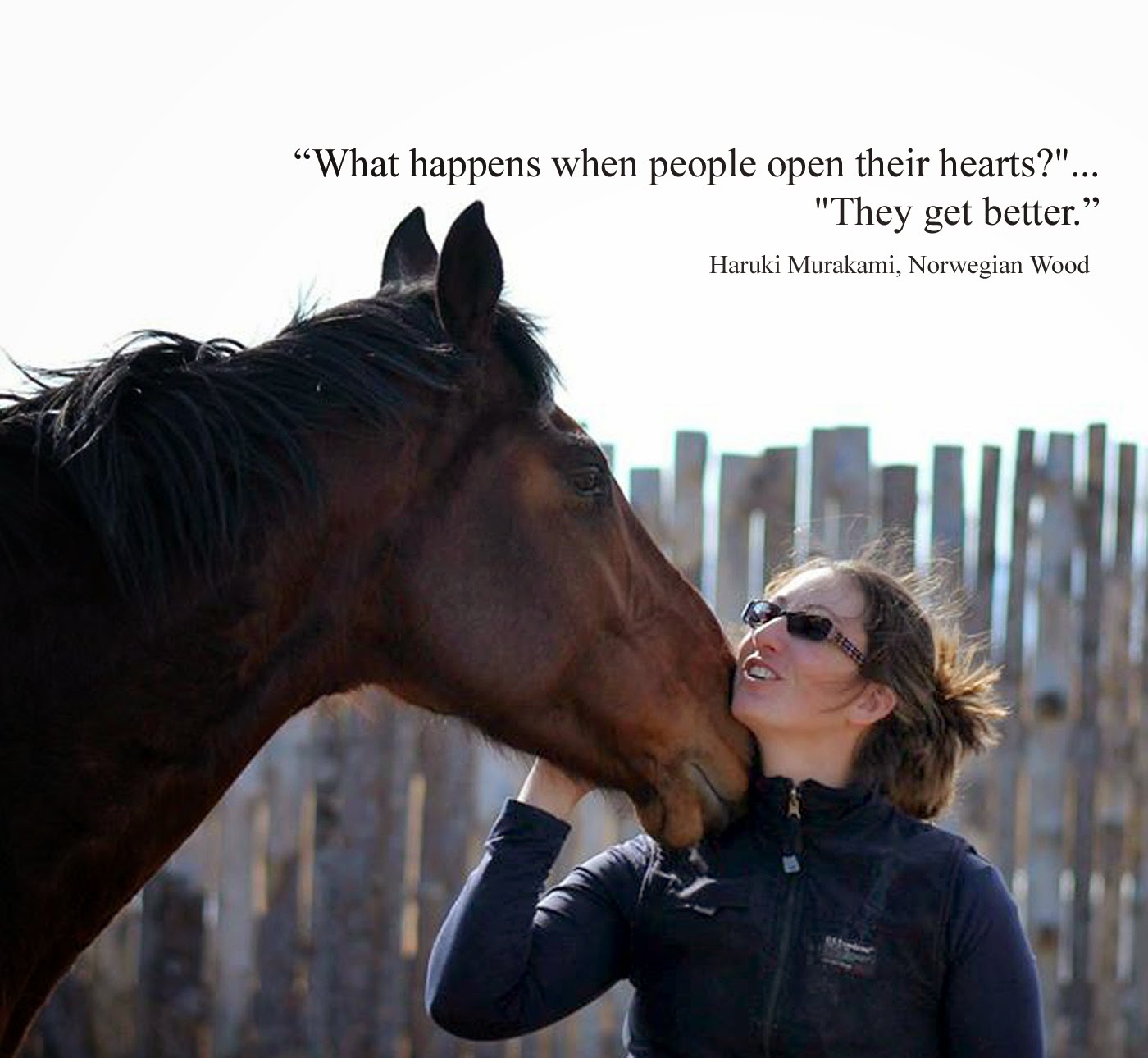I went out to halter Dewey and I found him lying down in his paddock in the soft snow. I couldn't resist, I took a photo of him just as he made a skeptical face asking why on earth would I take PHOTOS of him while he's napping?!
After grooming and tacking up we went to the covered arena and lunged first - it was cold and Dewey was FRESH! The dogs merrily jumped around, Miles barking encouragement, Mahzi eagerly climbing all over the mounting block in anticipation. Once Dewey had his yee-haws out of his system and settled to work pacing himself carefully over poles on the lunge line I figured he was ready to ride. We began working at the mounting block, having him step up to it and stand in the correct position for me to mount. While we were doing this the dogs for some reason decided that there simply MUST have been a rabbit in one of my pvc jump poles. They had cornered a rabbit in there before, and although I checked and there were no rabbits in them today, they still were all wound up about catching a rabbit during Dewey's first ride at Bit of Honey. At least it gave Dewey something entertaining to watch while I fiddled with stirrups, the camera, reins, among other things prior to mounting.
Since Dewey had track training before he went to CANTER Colorado last summer, I knew he had been sat on by at least an exercise rider, even though he never made it to his first race. Nevertheless, I like to start from the beginning and not assume a horse knows things. All the time we have spent in preparation for today was well worth it. Here he has learned to stand quietly, to steer and stop using a bit while ground driving, and he knows all the voice commands. As a result, when I climbed aboard the only new things for him were leg and seat aids, and carrying my weight.
Miles the border collie immediately abandoned Rabbit Watch 2015 to come help me in case I needed him to guide Dewey. Mahzi my border collie/lab (and Miles' protege') came over, too. I asked Dewey to walk using my breath and a little seat cue, and he immediately stepped out, with only a brief sway to accommodate for my weight. Miles walked in front of us and just off to the side, acting as my leader so if Dewey got confused he would know what to do. We walked in a couple large circles to the left and then to the right, and then did some stops and starts. We walked over the poles and only had a little spook when Mahzi (who is only a year old) pounced on the pole one last time for good measure to try to flush out a rabbit. My favorite part of the ride was during one of my practice transitions. To cue Dewey to go into the walk from a halt I took a quick breath as though I were blowing out a birthday candle and Dewey then blew his nose and started walking. A few steps later I exhaled with my whole torso to tell him to halt, and he took a deep deep sigh and stopped. His breathing even matched mine!
At the end of our very brief ride in the 14 deg. air we stood in the middle of the indoor arena for a minute. The dogs lined up next to us, sitting attentively. Dewey stood still, quiet and relaxed and turned his head to look at me as if to ask what was next. I patted him on his neck and haunches, and then I dismounted. It was a wonderful, uneventful, successful first ride!

























































